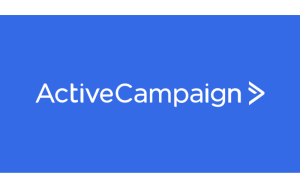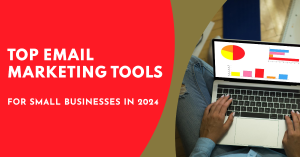Email marketing remains a cornerstone of effective marketing strategies in today’s digital age. With the rise of marketing automation, businesses can harness the power of email marketing automation software to streamline their campaigns, improve engagement, and drive conversions. This guide, the ultimate guide to email marketing automation software, delves deep into the world of email marketing automation software. It provides you with the knowledge and insights needed to choose the right tool and maximize its potential for your business.
What is Email Marketing Automation?
Email marketing automation involves using software to send email campaigns to your audience based on predefined triggers and schedules. This technology allows marketers to create personalized, timely, relevant communications without manual intervention. By automating repetitive tasks, businesses can save time, reduce errors, and focus on crafting compelling content and strategies.
Benefits of Email Marketing Automation
1. Time Efficiency
Automation significantly reduces the time spent on repetitive tasks such as sending welcome emails, follow-ups, and promotional messages. This frees up valuable time for marketers to focus on more strategic activities like content creation and campaign optimization.
2. Personalization at Scale
With automation, you can send highly personalized emails to your subscribers based on their behaviour, preferences, and interactions with your brand. This level of personalization can lead to higher engagement rates and improved customer loyalty.
3. Improved Customer Engagement
Automated emails can be triggered by your subscribers’ actions, such as signing up for a newsletter, purchasing, or abandoning a shopping cart. This ensures that your messages are timely and relevant, increasing the likelihood of engagement.
4. Enhanced Analytics and Reporting
Most email marketing automation tools come with robust analytics and reporting features. These tools provide insights into key metrics such as open rates, click-through rates, conversion rates, and more, allowing you to measure the effectiveness of your campaigns and make data-driven decisions.
5. Cost-Effectiveness
You can achieve better results with fewer resources by automating your email marketing efforts. This can lead to cost savings in terms of time and money, making email marketing automation a cost-effective solution for businesses of all sizes.
Key Features to Look for in Email Marketing Automation Software
When choosing an email marketing automation software, it’s essential to consider the features that will best meet your needs. Here are some key features to look for:
1. Email Templates and Design Tools
A good email marketing automation tool should offer a variety of customizable templates and an intuitive drag-and-drop editor. This allows you to create visually appealing emails without needing advanced design skills.
2. Segmentation and Targeting
Effective segmentation and targeting capabilities enable you to send personalized messages to specific groups within your audience. Look for software that allows you to segment your list based on criteria such as demographics, behaviour, and engagement levels.
3. Automation Workflows
Creating complex automation workflows is crucial for executing sophisticated email marketing strategies. Choose a tool that offers a visual workflow builder, allowing you to map out and automate various customer journeys and interactions.
4. Integration with Other Tools
Your email marketing automation software should integrate seamlessly with other tools and platforms you use, such as CRM systems, e-commerce platforms, and social media networks. This ensures a cohesive marketing strategy and a unified view of your customer data.
5. Analytics and Reporting
Comprehensive analytics and reporting features are essential for tracking the performance of your email campaigns. Look for software that provides detailed insights into key metrics and the ability to generate custom reports.
6. A/B Testing
A/B testing allows you to experiment with different elements of your emails, such as subject lines, content, and call-to-action buttons, to determine what resonates best with your audience. Choose a tool that supports A/B testing and provides actionable insights.
7. Scalability
As your business grows, your email marketing needs will evolve. Ensure your chosen software can scale with your business, offering advanced features and higher capacity as needed.
Top Email Marketing Automation Software in 2024
With numerous email marketing automation tools available in the market, choosing the right one for your business can be challenging. Here are some of the top email marketing automation software options in 2024:
1. Mailchimp
Mailchimp is a popular email marketing automation tool known for its user-friendly interface and robust feature set. It offers many templates, advanced segmentation, and powerful automation workflows. Mailchimp also integrates with numerous third-party apps, making it a versatile choice for businesses of all sizes.
2. HubSpot
HubSpot is an all-in-one marketing platform that includes email marketing automation in its suite of tools. It offers advanced features such as lead scoring, CRM integration, and detailed analytics. HubSpot’s visual workflow builder makes creating and managing complex automation sequences easy.
3. ActiveCampaign
ActiveCampaign is a powerful email marketing automation tool that combines email marketing, automation, and CRM capabilities. It offers advanced segmentation, A/B testing, and a robust automation builder. ActiveCampaign is known for its excellent customer support and extensive integrations.
4. Sendinblue
Sendinblue is an affordable email marketing automation tool offering many features, including email design tools, segmentation, and automation workflows. It also provides SMS marketing capabilities, making it a versatile option for multi-channel marketing campaigns.
5. GetResponse
GetResponse is an email marketing automation tool offering comprehensive features, including email design, automation workflows, and advanced analytics. It also provides additional tools for landing pages, webinars, and e-commerce, making it an excellent choice for businesses looking for an all-in-one solution.
6. Klaviyo
Klaviyo is a popular choice for e-commerce businesses thanks to its deep integration with platforms like Shopify and Magento. It offers advanced segmentation, automation, and personalized product recommendations. Klaviyo’s robust analytics and reporting features provide valuable insights into customer behaviour and campaign performance.
Best Practices for Email Marketing Automation: The Ultimate Guide to Email Marketing Automation Software
To maximize the effectiveness of your email marketing automation efforts, consider implementing the following best practices:
1. Define Clear Goals
Determining clear goals is essential before launching any email marketing automation campaign. Whether your goal is increasing sales, boosting engagement, or nurturing leads, having specific objectives will help you design more effective automation workflows.
2. Segment Your Audience
Segmentation is crucial for delivering personalized and relevant content to your subscribers. Use the data you have on your audience to create targeted segments based on factors such as demographics, behaviour, and engagement levels.
3. Create Engaging Content
Your emails should provide value to your subscribers, whether it’s through informative content, exclusive offers, or personalized recommendations. Focus on creating engaging content that resonates with your audience and encourages them to take action.
4. Test and Optimize
Regularly test different elements of your emails, such as subject lines, content, and CTAs, to determine what works best. Use the insights gained from A/B testing to optimize your campaigns and improve performance over time.
5. Monitor Performance
Keep a close eye on critical metrics such as open, click-through, and conversion rates. Use the analytics and reporting features of your email marketing automation tool to track performance and make data-driven decisions.
6. Maintain a Clean Email List
Regularly clean your email list by removing inactive subscribers and unsubscribed subscribers. This helps improve your deliverability rates and ensures your messages reach engaged and interested recipients.
7. Comply with Regulations
Ensure your email marketing practices comply with relevant regulations, such as the General Data Protection Regulation (GDPR) and the CAN-SPAM Act. This includes obtaining proper consent from subscribers and providing clear opt-out options in your emails.
Real-World Examples of Successful Email Marketing Automation
Example 1: Welcome Series
A welcome series is an automated sequence of emails sent to new subscribers to introduce them to your brand and nurture the relationship. For example, an e-commerce company might send a welcome email with a discount code, followed by emails showcasing popular products, customer testimonials, and helpful content.
Example 2: Abandoned Cart Emails
Abandoned cart emails are triggered when a customer adds items to their cart but does not complete the purchase. These emails can remind the customer of the items left behind, offer an incentive to complete the purchase and provide customer support if needed.
Example 3: Re-engagement Campaigns
Re-engagement campaigns target inactive subscribers who haven’t interacted with your emails for some time. These campaigns can include special offers, surveys, or exclusive content to encourage re-engagement and retain subscribers.
Example 4: Post-Purchase Follow-Up
Post-purchase follow-up emails are sent after a customer makes a purchase. These emails can include order confirmations, shipping information, product recommendations, and requests for reviews or feedback.
Future Trends in Email Marketing Automation: The Ultimate Guide to Email Marketing Automation Software
As technology continues to evolve, the future of email marketing automation looks promising. Here are some trends to watch for:
1. Artificial Intelligence and Machine Learning
AI and machine learning are set to play a significant role in email marketing automation. These technologies can analyze vast amounts of data to predict customer behaviour, optimize send times, and personalize content unprecedentedly.
2. Hyper-Personalization
Hyper-personalization takes personalization to the next level by using real-time data and AI to deliver highly relevant content to individual subscribers. This can lead to improved engagement and conversion rates.
3. Omnichannel Integration
Email marketing automation will increasingly integrate with other marketing channels like social media, SMS, and chatbots to create seamless and cohesive customer experiences across multiple touchpoints.
4. Interactive Emails
Interactive emails, which allow recipients to take actions such as making purchases or completing surveys directly within the email, are expected to become more prevalent. These emails can enhance user experience and
drive higher engagement.
5. Enhanced Privacy and Data Security
With growing concerns about data privacy and security, email marketing automation tools must prioritize compliance with regulations and implement robust security measures to protect customer data.
Conclusion
Email marketing automation software is a powerful tool to help businesses streamline their marketing efforts, engage their audience, and drive conversions. By choosing the right software, implementing best practices, and staying abreast of emerging trends, you can unlock the full potential of email marketing automation and achieve your marketing goals. Whether you’re a small business owner or a seasoned marketer, the insights and strategies outlined in this guide will equip you with the knowledge and tools needed to succeed in the ever-evolving world of email marketing automation.
Finally, if you are looking for the ultimate email marketing automation software guide, go here to learn everything you need to know.
Some links in this article may be affiliate links, meaning they could generate compensation to us without any additional cost to you should you choose to purchase a paid plan. These are products we have personally used and confidently endorse. It’s important to note that this website does not offer financial advice. You can review our affiliate disclosure in our privacy policy for more information.




